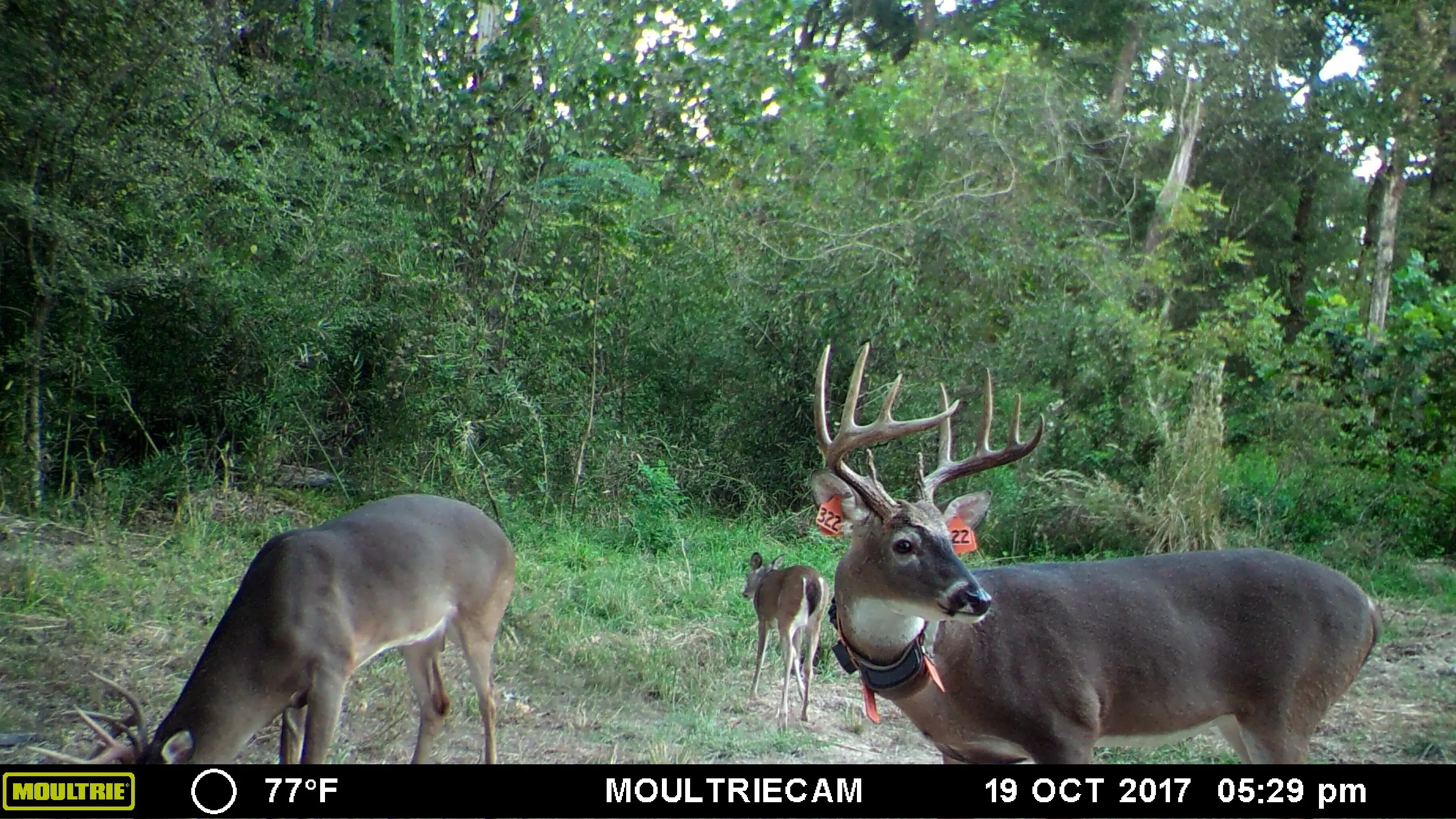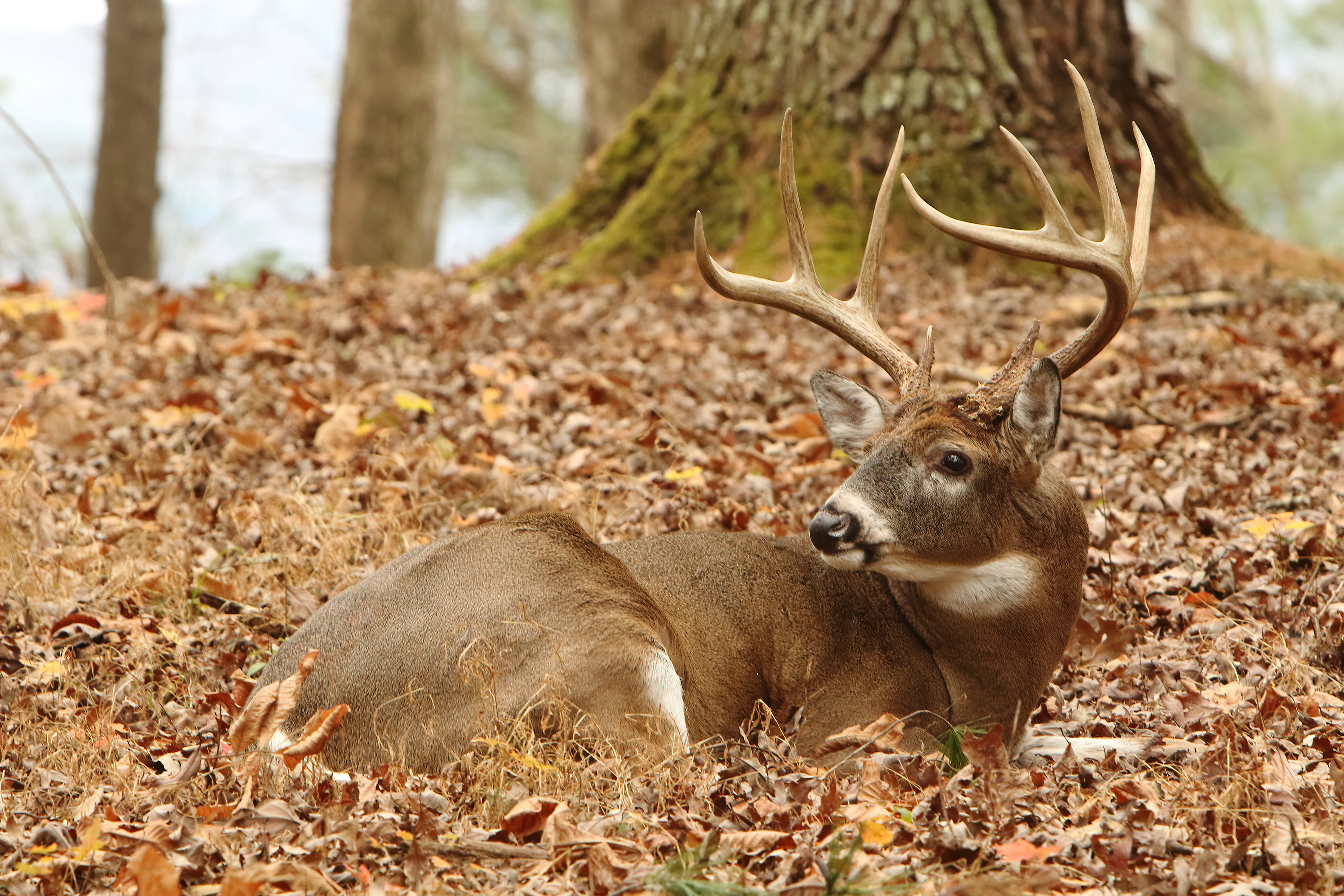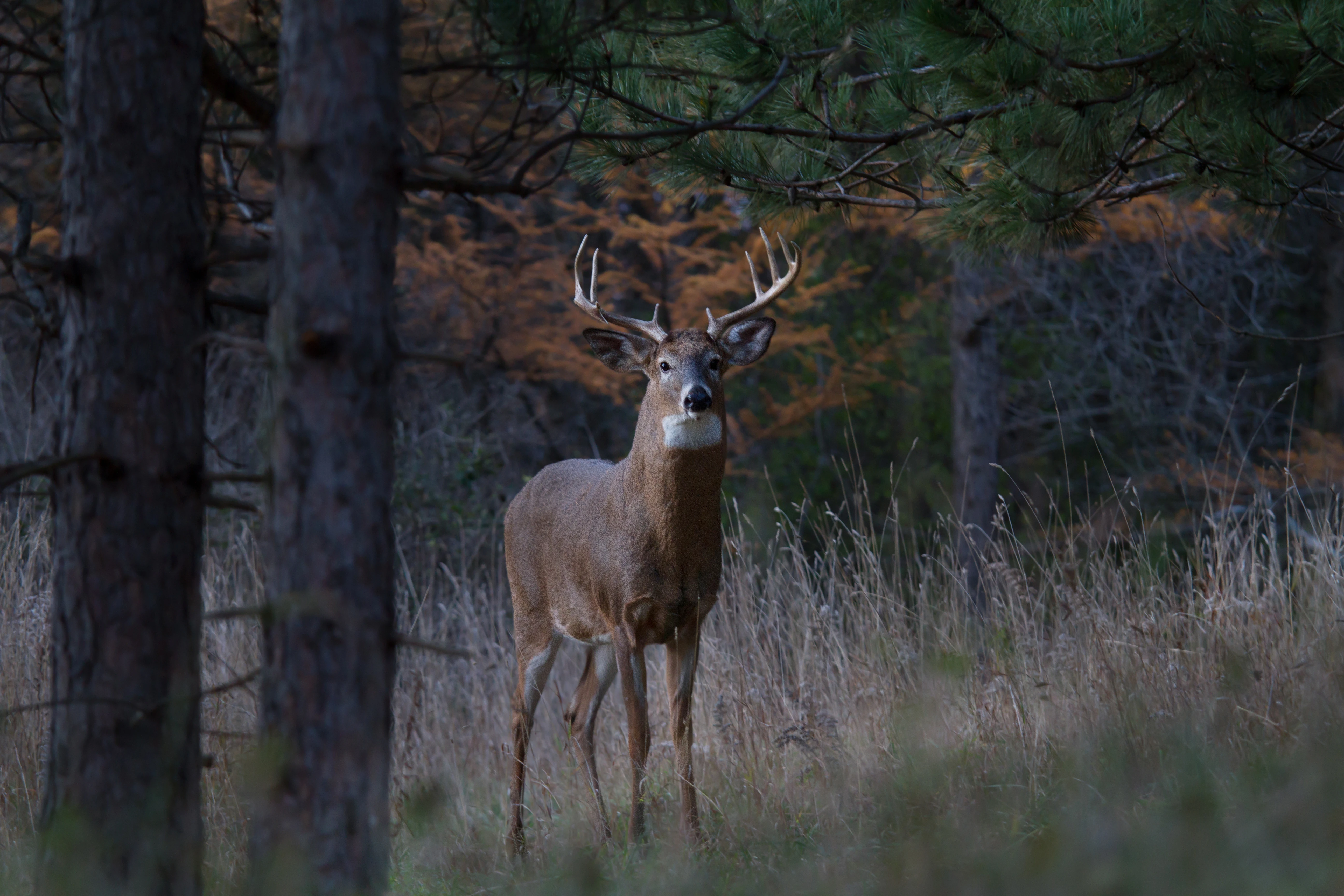As deer hunters, we often talk about a buck’s bedding area as if it’s a well-defined spot that an individual whitetail returns to faithfully. If only it were that simple. A recently concluded telemetry study in Mississippi shows what some savvy hunters already suspect—that while some bucks are occasionally faithful to a bedding spot, many display no such loyalty. But that's far from all this groundbreaking research project reveals about buck bedding habits. Thanks to our friends at the National Deer Association, we connected with one of the study's lead researchers to learn the latest science on how mature whitetail bucks take their rest—and how that might help you fill your tag this fall.
The Big Black River Buck Bedding Study
The research was conducted in the Big Black River region of Mississippi and involved 60 bucks that were captured from 2017-2019, fitted with telemetry collars, and then released back into wild. “The bucks were all at least 2-½ years old,” says Luke Resop, a graduate research assistant at the Mississippi State Deer Lab, one of the country's leading institutions for whitetail research.

The study area was conducted on over 50,000 acres of mostly-private land comprised of a mix of agriculture and large blocks of timber. “I’d put this area up against any place in the country—including the best of the Midwest—when it comes to producing big, mature deer. The cover and food are both excellent and most of the landowners are serious about managing for mature bucks," says Resop. The landowners were also happy to cooperate fully in the study. “They exhibited tremendous buy-in ” Resop says. “Most of them agreed not to shoot any study deer, which was a huge help."
During the study, telemetry collars sent researchers location fixes on each buck every 15 minutes for the entire fall hunting season, which opens October 1 and runs through the end of January. In total, that came to 96 locations for each buck every day and over a million GPS points compiled over the course of the study.
Resop and his crew sorted bedding locations into two types. “A bedding site was a single, solitary location where a buck was stationary for at least one hour,” he says. “We excluded all bedding locations in fields and food plots, since whitetails will simply lie down when foraging, especially at night. Since many bucks bed for periods much less than an hour, we consider our inventory of bedding sites to be on the conservative side.”
Conversely, a bedding area was one or more bedding sites separated from all other sites by at least 100 yards. So, a bedding area could consist of a solitary bed or a string of connected bedding sites separated from the next by no more than 100 yards.
Key Findings from the Buck Bedding Study

Researchers are still in the process of crunching all the data, and there's a lot of it, Resop stresses. That said, there are already a number of key takeaways for hunters. Here's a rundown.
Takeaway No. 1: Whitetail Bucks Really Sleep Around
As much as hunters would like to believe otherwise, whitetail bucks display a wide variety of loyalty to bedding areas. “Bucks aren’t as predictable as people like to think they are,” Resop says. “Of course, there are bucks that have consistent and predictable bedding areas and sites. But on an average, bucks in this study had 31 distinct bedding areas, spread over the four-month period. Remember this is an average; one buck used 87 different bedding areas, while another buck only used 8 areas for the entire hunting season.”
Resop also notes that the number of bedding areas used by a given buck increased steadily during phases of the rut—from pre-rut, to early, peak, to late rut—and then dropped off slightly in the post-rut. “Bucks expand their search for does in a stair-step fashion as the rut progresses,” he says. “They’re not only expanding the radius of their search for does, but the beds they use are spaced farther and farther apart as you get deeper in the rut.”
Takeaway No. 2: Bucks Return to Favorite Bedding Areas Every Several Days
Of course, most of us want to know if bucks are returning to bedding areas they’ve used previously, and naturally the answer is “sometimes.” Resop and his team called this “circuit time” and defined it as the time period it took for a buck to return to a bedding area (not site). “Over the entire study period, circuit time averaged six days,” he said. “During the rut it shortened dramatically and averaged 1.5 days during each of the rut phases. “
Takeaway No. 3: Half of All Bedding Areas Are One-Time Stays
Resop noted that about 50% of bedding areas were used only one time during the hunting season and the buck never again bedded within 100 yards of that original spot. “On the flip side, about 3% of a buck’s bedding areas were used close to 200 times during the fall,” he said. “So a buck will have multiple bedding areas he uses only once, but a handful that he really prefers. But that doesn’t mean he’s predictable; he might come cruising through there on his way to bed, but not necessarily by the same tree or blind location. Bedding areas can be dozens of acres in size.”
Takeaway No. 4: Bucks Don't Bed All Day—Not Even Close

One particularly interesting aspect of the study was buck use of beds according to time of day. “We were surprised by the percentage of daytime use of beds,” Resop says. “About 50% of beds were night beds and 50% were day beds. The average time spent in an individual day bed was 1.75 hours and night time use was 1.6 hours. The bucks in our study were only spending about 3-½ hours bedded during the day, and that was typically divided into two sessions of just less than two hours each. While they might not move super far—a buck might get up, walk 50 to 100 yards to grab an acorn or some browse—they are on their feet quite a bit during the day. If you’re on to a bedding area that a buck is faithful to, it certainly pays to get in there.”
Takeaway No. 5: Studying the Bedding Habits of Individual Bucks Should Pay Off
One of the things that stood out to Resop was the unique behavior and character of individual bucks. “You really can’t know too much about an individual deer,” he says. “And what you learned about one buck you hunted might not apply to the next one you chase. They’re all different, and while the data revealed some general behaviors of mature bucks, it’s important to remember that one mature buck might not behave like another.”
As an example, Resop recalled one study buck with high fidelity to one specific bedding site. “He loved the inside bend of a river in the study area,” he says. “This oxbow on the river had only one way to get in and out unless you crossed the river, but that buck loved to bed in that spot. So it would be tempting to say ‘Well, that oxbow is a great spot for a big buck to bed.’ But meanwhile, there’s another study buck that lived nearby, and that deer had the opportunity to bed in that oxbow almost any time he wanted to—and he never did. That buck liked to bed out in fingers of timber that jutted out into nearby ag fields.”
Scientist are cautious by nature and quick to list their caveats and provisos, so Resop naturally has a few. First, he notes that the study area might have had a direct influence on where and how often study bucks bedded. “Cover is not a limiting factor here, and deer have all kinds of bedding options available to them,” he says. “You get up in the Midwestern states like Iowa, Illinois, Wisconsin, and others, and lots of the landscape is taken up by major agriculture. Once those crops come off in the fall, you lose a lot of suitable bedding cover for deer. So, it’s important to remember that bedding behavior in a different region might be quite a bit different than what we found in our study.”
Second, Resop stressed again that the data revealed so far by the research represents “only the tip of the iceberg" when it comes to buck bedding tendencies. “We didn’t examine the influence of wind, weather, hunting pressure, and other factors on mature buck bedding behavior. But we’ve got some really sharp people working on just that kind of information, so I’d consider the information here to be a kind of sneak peek into the topic.”
Stay tuned, as we will bring you additional findings as they become available. In the meantime, the sneak peek above should help you put your preseason scouting observations into the proper context when it comes to nailing down bedding areas and how to hunt them.


